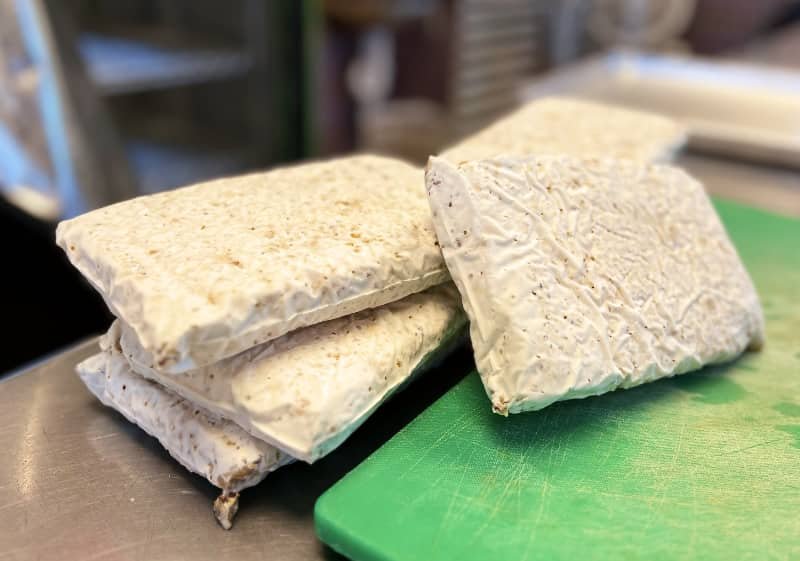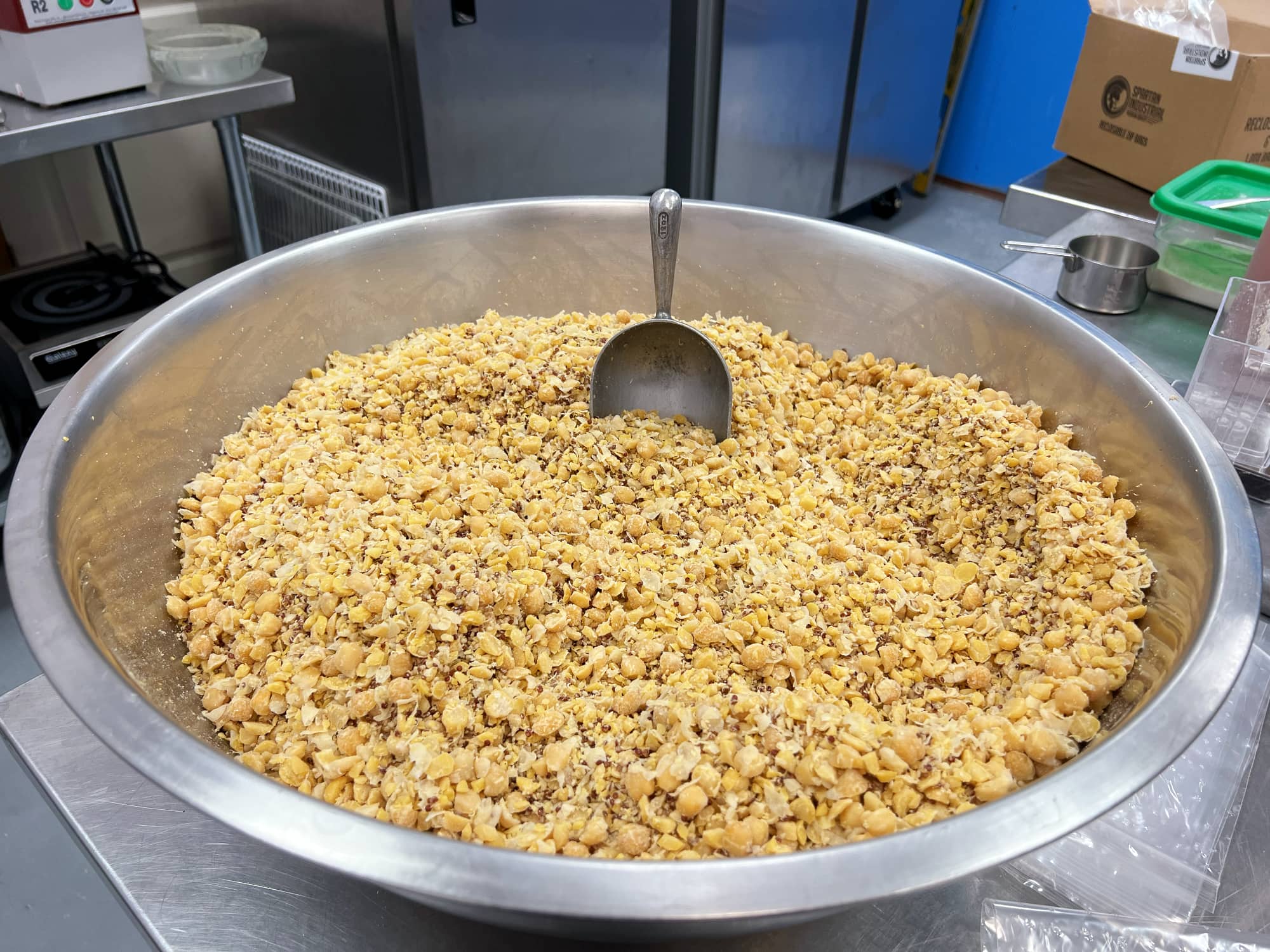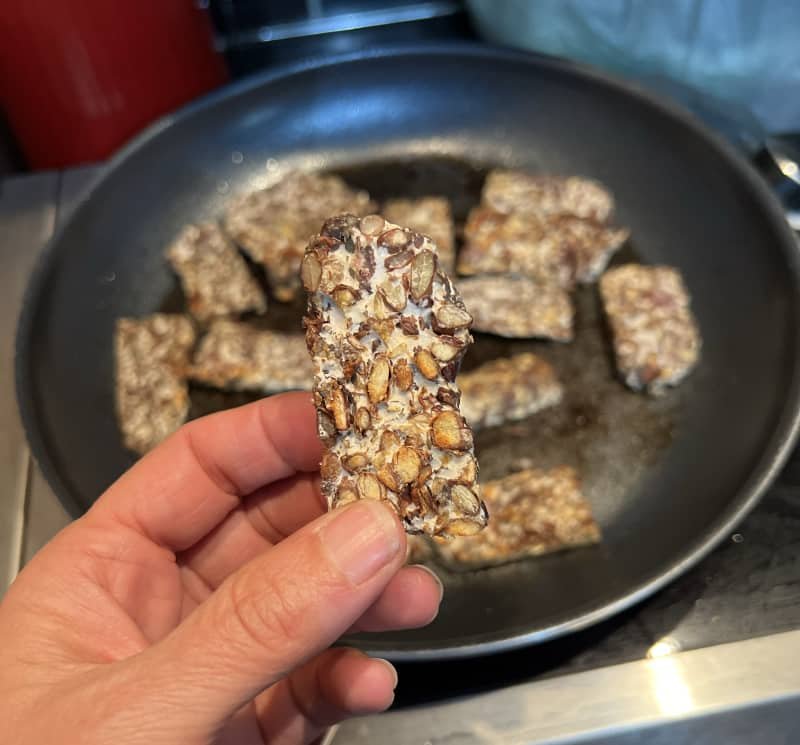
Tempeh is a traditional Indonesian food made by naturally fermenting beans. Indonesians use soy beans but you can use many different beans, seeds, nuts, and grains to make tempeh.
Tempeh provides a unique, rich source of plant based protein that is minimally processed. The fermentation process breaks down the beans into an easily digestible and highly nutritional food source.
Luv Tempeh's tempeh include between 2 and 4 whole foods ingredients made up of beans, grains, nuts, and seeds. This small batch, artisanal, handmade, unprocessed, unpasteurized, no preservative plant protein is made with organically grown ingredients in Durango, CO.
Tempeh is an amazing easy to digest source of nutrition that is full of pro-biotics, pre-biotic fiber and post biotic nutrients including b12. Superfood!
How is tempeh made?

Tempeh is made from soaking, cooking and inoculating a substrate, usually consisting of beans, grains, nuts, and seeds with a filamentous fungus (Rhizopus). The mold (fungus) grows, metabolizing the substrate along its journey to becoming a mushroom. In this process oligosaccharides are reduced, producing less gas. Phytates are reduced by the active enzyme phytase, these are substances known to bind up minerals making them less available in digestion.
The active enzymes in the mold also predigest the proteins into amino acids ensuring more efficient assimilation. During the process of the fungus natural digestion post biotic nutrition is created as a byproduct of fungal metabolism, such as short chain fatty acids. The tempeh mold itself also acts as a natural heat stable antimicrobial, keeping out bad bacteria. Tempeh is known in Indonesia by locals for safeguarding the digestive tract.
What does fresh tempeh taste like?
Tempeh has a meaty texture and a slightly mushroomy-nutty flavor. Tempeh is famous among chefs and foodies for its umami property and is growing fast in popularity among vegans, vegetarians and omnivores - in other words, everyone!
How do you use tempeh?

Tempeh is extremely versatile. Throw it on the grill, toast it in a toaster, pan fry it, roast it, etc. You can cook it any way you would cook meat or veggies. Try your favorite marinade with it!
Ferment your beans
Why ferment your beans? Fermented foods are rich in probiotics so by consuming fermented foods you are adding beneficial bacteria, fungus and enzymes to your overall intestinal flora, increasing the health of your gut microbiome and digestive system and enhancing the immune system. Your microbiome loves it! Also you are culturing the natural probiotics present in the beans, extra microbiome bonus!
What other nutrients can you find in tempeh?
Tempeh is most commonly a soy bean product but our companies, like ours, are producing many diverse varieties all processing their own unique qualities.
Tempeh is not only rich in protein but it is also rich in iron, calcium, magnesium, phosphorus, thiamine (b1), riboflavin (b2), niacin, pantothenic acid, folacin (folic acid), cyanocobalamin (b12), biotin and a great source of prebiotic fiber, (essential food for our gut microbiome).
So, in short, tempeh is an amazing nutrient rich, protein dense, living, plant based super hero food.! This ancient food is a delicious simple way to incorporate plant based protein into your diet with whole foods instead of processed alternatives.
